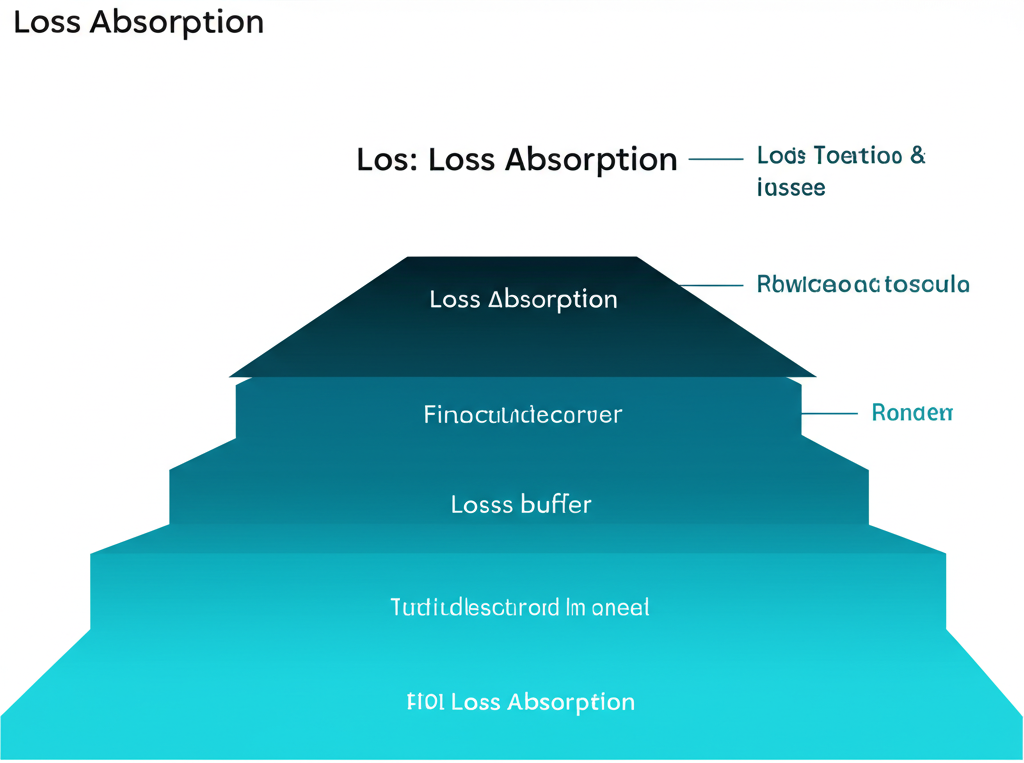What Is a Bail-In? The Official Definition
A bail-in is a mechanism used to rescue a failing bank by restructuring its capital from within—without relying on public funds. Unlike traditional rescues that lean on government support, a bail-in requires the bank’s own investors and creditors to shoulder the losses. This is typically done by wiping out shareholder equity or converting debt into ownership stakes, effectively recapitalizing the institution using internal resources. The goal is to stabilize the bank, maintain financial system integrity, and avoid burdening taxpayers.
The concept emerged as a direct response to the 2008 financial crisis, where massive taxpayer-funded bailouts sparked public outrage and raised concerns about moral hazard—the idea that institutions may take excessive risks if they expect to be rescued. A bail-in flips this model: those who benefited from a bank’s growth are now the first to absorb its losses during collapse. By making private stakeholders accountable, regulators aim to create a more responsible and resilient financial ecosystem.

Bail-In vs. Bail-Out: The Critical Distinction
While both bail-ins and bail-outs aim to prevent financial meltdowns, they represent opposite philosophies in crisis management. Understanding their differences is essential for grasping modern banking safeguards and regulatory priorities. The central contrast lies in where the rescue money comes from—internal stakeholders or external public funding.
A **bail-out** occurs when a government steps in with taxpayer money to prop up a failing institution. This was the dominant strategy during the 2008 crisis, with governments injecting billions into major banks to prevent systemic collapse. In contrast, a **bail-in** forces the bank’s own investors—such as shareholders and bondholders—to bear the cost. Instead of public funds filling the gap, the bank uses its existing liabilities to rebuild capital. This shift not only protects public finances but also discourages reckless risk-taking by aligning potential rewards with real financial exposure.

| Feature | Bail-In | Bail-Out |
|---|---|---|
| Source of Funds | Internal (Creditors & Shareholders) | External (Government & Taxpayers) |
| Primary Goal | Recapitalize the bank by converting debt to equity. | Inject new capital to cover losses. |
| Who Bears the Cost? | Shareholders, bondholders, and unsecured creditors. | The public / taxpayers. |
| Impact on Moral Hazard | Reduces it by making investors responsible for their risk. | Increases it by creating an expectation of government rescue. |
| Government Role | Acts as a resolution authority to manage the process. | Acts as a lender or investor of last resort. |
How Does a Bail-In Process Actually Work?
A bail-in is not an ad hoc emergency measure but a carefully governed procedure led by national resolution authorities. Its design prioritizes speed, stability, and fairness—ensuring that critical banking functions continue while minimizing disruption to the broader economy. The process follows a strict order of loss absorption, known as the “bail-in hierarchy,” which determines who loses what and when.
Identifying the Failing Institution
The process begins when regulators determine that a financial institution is no longer viable and its failure could threaten the stability of the financial system. These institutions are often labeled as “systemically important financial institutions” (SIFIs)—large banks whose collapse could trigger widespread economic fallout. Once this threshold is met, regulators may trigger a bail-in to prevent contagion and avoid a disorderly bankruptcy.
The Hierarchy of Loss Absorption
Losses are imposed in a clear sequence to ensure predictability and fairness. This waterfall structure reflects the principle that those who stand to gain the most during good times should also bear the most risk during downturns.
- Shareholders: Equity holders are the first in line to lose their investment. Their shares are typically written down to zero, wiping out their ownership stake.
- Junior Creditors: Subordinated debt holders, such as owners of certain high-yield bonds, come next. Their debt may be converted into equity or partially canceled to absorb further losses.
- Senior Creditors: If additional capital is needed, even senior unsecured creditors may face write-downs or forced conversions—though this step is rare and usually reserved for extreme cases.

The Role of Insured Deposits
One of the most important safeguards in any bail-in framework is the protection of insured deposits. Ordinary savers are shielded from the process to maintain public confidence in the banking system. In the United States, funds covered by the Federal Deposit Insurance Corporation (FDIC)—up to $250,000 per depositor, per insured bank, for each account ownership category—are completely insulated from loss. These deposits sit at the top of the financial hierarchy and are never used to recapitalize a failing bank.
The Legal Framework for Bail-Ins in the United States
Although the term “bail-in” is more commonly associated with European banking reforms, the U.S. has established a parallel system through domestic legislation. The cornerstone of this framework is the Dodd-Frank Wall Street Reform and Consumer Protection Act of 2010, specifically Title II, which created the Orderly Liquidation Authority (OLA).
Under the OLA, the FDIC is empowered to step in and manage the resolution of a failing SIFI in a way that prevents systemic disruption. While the word “bail-in” doesn’t appear explicitly in the law, the mechanism functions identically: the FDIC can take control of a failing firm, keep essential operations running, and impose losses on equity holders and unsecured creditors to restore solvency. Crucially, the law prohibits the use of taxpayer dollars, reinforcing the principle that private investors—not the public—must bear the consequences of financial failure.
How to Protect Yourself from Bank Bail-Ins
For the average person, the risk of losing insured deposits in a bail-in is virtually nonexistent. However, individuals with significant assets or complex investment portfolios should take proactive steps to understand and manage their exposure. Knowledge and diversification remain the most effective tools for financial protection.
Adhere to FDIC Insurance Limits
The safest way to protect your cash is to stay within FDIC insurance limits. The FDIC insures up to $250,000 per depositor, per insured bank, for each account ownership type. If your savings exceed this amount, consider spreading your funds across multiple accounts or banks to ensure full coverage.
Diversify Your Assets
Diversification isn’t just for investments—it applies to cash holdings too. By distributing large balances across several FDIC-insured institutions, you can ensure that every dollar is protected. This strategy is especially valuable for businesses, retirees, or high-net-worth individuals who may hold balances well above the insurance cap.
Understand Your Investments
It’s crucial to distinguish between protected deposits and risk-bearing financial products. While your savings account is safeguarded, other instruments like bank stocks, corporate bonds, or so-called bail-in bonds are fully exposed to loss in a crisis. These bonds, often issued by large banks, are structured to convert into equity or be written down during a resolution. Investors accept this risk in exchange for higher yields. Platforms like Moneta Markets offer transparency and educational tools to help investors assess such risks and make informed decisions about where to allocate capital in a post-2008 financial landscape.

Frequently Asked Questions (FAQ) about Bail-Ins
What is the main purpose of a bank bail-in?
The main purpose of a bail-in is to rescue a failing systemically important financial institution without using taxpayer money. It aims to restore the bank’s capital by imposing losses on its shareholders and certain creditors, thereby ensuring financial stability and reducing the problem of “moral hazard.”
Are my insured bank deposits at risk during a bail-in?
No. Insured bank deposits are explicitly protected and excluded from the bail-in process. In the U.S., deposits up to the FDIC limit of $250,000 per depositor, per bank, are safe and not subject to being written down or converted to equity.
Which countries have used a bail-in procedure before?
The bail-in mechanism has been part of international financial reforms, particularly in Europe. A notable early example was the 2013 resolution of Cypriot banks. More recently, the framework was used in the 2017 resolution of Spain’s Banco Popular and the 2023 resolution of Credit Suisse, as detailed by the Bank for International Settlements. These events have served as real-world tests of the bail-in framework.
Who loses money first in a bail-in?
There is a clear hierarchy. Shareholders are the first to lose their investment, as their equity is typically wiped out. Following them are the holders of junior or subordinated debt, and then senior unsecured creditors and bondholders if necessary to cover all losses.
What is the difference between a bail-in and a bail-out?
The key difference is the source of funds. A bail-in is an internal rescue where the bank’s own creditors and shareholders absorb losses. A bail-out is an external rescue where the government (taxpayers) injects capital to save the institution.
How does the Dodd-Frank Act relate to bail-ins in the US?
The Dodd-Frank Act’s Title II created the Orderly Liquidation Authority (OLA), which serves as the legal framework for a bail-in in the U.S. It gives the FDIC the power to resolve a failing major financial firm by imposing losses on its shareholders and creditors, explicitly prohibiting the use of taxpayer money for a bailout.
What is a bail-in bond and how does it work?
A bail-in bond is a type of debt instrument specifically issued by a bank that is designed to be easily converted into equity or written down if the bank gets into financial trouble. Investors who buy these bonds receive a higher yield to compensate for the explicit risk that their investment could be used to absorb losses in a bail-in scenario.
Can a bail-in happen to any bank?
Bail-in procedures are typically designed for large, systemically important financial institutions (SIFIs) whose failure could trigger a wider financial crisis. Smaller, non-systemic banks would more likely be resolved through traditional FDIC procedures, which involve selling the bank to a healthy institution or paying out insured depositors.
